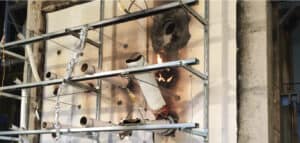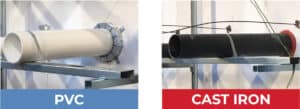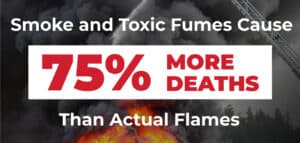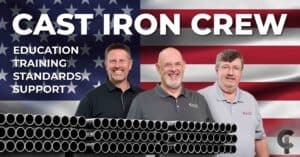Fire Stopping & Life Safety
History of Fires
Tragedies resulting from disasters and inadequate safety provisions led to improvements in building codes. This was the case with the tragic Las Vegas MGM Grand Hotel and Casino fire in 1980, leaving 85 people dead. Toxic fumes from melted/burning PVC piping and a lack of sprinklers contributed to the deadly fire. People died mostly from poisonous gas and smoke inhalation. About three months later, another hotel fire at the Las Vegas Hilton had eight fatalities.

Las Vegas MGM Grand Hotel and Casinio Fire
Even though codes have been updated, fires and deaths from smoke inhalation continue. Building materials and fire stopping systems play an important role in passive fire protection.
Fire Stopping Installation
Buildings are constructed with fire-rated barriers to contain the spread of smoke and flames when a fire occurs. Firestopping materials are required at every penetration of a fire-rated barrier in a building. It’s important to consider the cost and complexity when installing firestopping plastic pipe penetrations.
Due to being a combustible product, plastic piping requires a more complex and costly method of firestopping. Installed in the annular space, these materials expand when exposed to high heat. A common fire stopping assembly for plastic piping through concrete floors consists of a ring of intumescent material held in place around the pipe with a metal collar. This assembly involves shooting masonry anchors into the concrete, clamping the collar in place and installing a smoke seal with a bead of fire resistant caulking.
The expected service life of these intumescent materials varies significantly by manufacturer. Some fire stop manufacturers claim service life measured in decades, some make no claims of an expected service life. Although a test method for aging of intumescent materials has been developed, there is no established method for using the results to calculate service life. As with any potentially life-saving product, these fire stopping materials must be installed properly, tested and listed by an accredited third-party agency before use.

PVC Installation Fire Barrier Test
Cast iron piping, on the other hand, does not burn or melt in a fire, thus requiring a simpler and more cost-effective means of firestopping. All that is required to seal a cast iron penetration is some mineral wool batting and fire-resistant caulking around the pipe. Simpler, faster, and much more cost-effective. And the more floors in the building, the greater the cost savings.

PVC v.s. Cast Iron Fire Stopping Materials
Protect Building Occupants
Did you know that more deaths are the result of smoke inhalation than burns when a fire occurs? According to the National Fire Protection Association (NFPA), smoke and toxic fumes cause 75% more deaths than actual flames*.

Firestopping systems are a critical part of any building to protect building occupants. These systems are intended to stop the spread of fire and its byproducts such as toxic smoke and fumes. Cast iron systems naturally promote life safety when fire is present in a building because they do not burn or melt in a fire and maintain structural integrity.
Consider the materials you use as it could determine life or death. These fire-resistive qualities combined with the lack of toxic fumes make cast iron plumbing systems safer for building occupants and first responders compared to plastic piping, which is combustible. Cast iron is the logical and safe choice.
We’re Here to Help
Looking for more details about firestopping materials? Contact a member of the Cast Iron Crew for more information.

*National Fire Protection Association Source: https://www.nfpa.org/~/media/Files/Code%20or%20topic%20fact%20sheets/FireSafetyInTheUSFactSheet.pdf
Contact Us
Need assistance or technical information on cast iron soil pipe and fittings?
Find your CISPI RepFollow Us on Facebook
Follow the Institute on Facebook for current industry events and more information on cast iron soil pipe and fittings.
Follow UsFollow Us on Instagram
Follow CISPI on Instagram for weekly posts about the benefits of using cast iron soil pipe and fittings in your DWV system.
Follow UsContact Us
Need assistance or technical information on cast iron soil pipe and fittings?
Find your CISPI RepFollow Us on Facebook
Follow the Institute on Facebook for current industry events and more information on cast iron soil pipe and fittings.
Follow UsFollow Us on Instagram
Follow CISPI on Instagram for weekly posts about the benefits of using cast iron soil pipe and fittings in your DWV system.
Follow Us